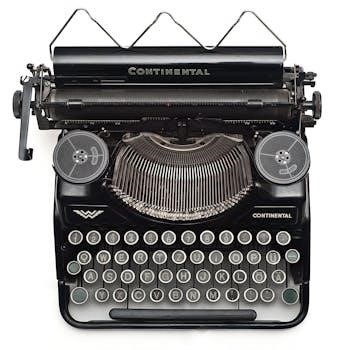
eft tech manual
Unlock the secrets of EFT with our tech manual! Dive into practical guidance and master the Emotional Freedom Techniques. Your journey to emotional well-being starts here. EFT tech manual.
EFT Tech Manual⁚ System Requirements and Technical Specifications
This section details the necessary hardware and software configurations for optimal performance in Escape From Tarkov (EFT). It covers minimum and recommended system specifications, focusing on CPU, GPU, RAM, and storage requirements. The manual also addresses networking protocols and file transfer limits crucial for online gameplay, alongside compatibility with .NET Framework 4.8.
Minimum System Requirements for Escape from Tarkov
To run Escape from Tarkov at its bare minimum, your PC should meet certain specifications. These are considered the absolute baseline, and while the game may launch, expect lower frame rates and potential performance issues, especially in more demanding areas. A dual-core processor is the starting point, with Intel Core 2 Duo or i3 at 2.4 GHz, or AMD Athlon/Phenom II at 2.6 GHz being adequate. For RAM, 8 GB is the minimal requirement. The game needs a DirectX 11 compatible graphics card with at least 2GB of VRAM. It’s important to note that these minimums may not be sufficient for a smooth and enjoyable experience. The game also requires Windows 7, 8, or 10 (64-bit). Keep in mind that these are the very basic requirements and might lead to stuttering. To enjoy the game properly, consider aiming for the recommended specs. Storage-wise, a standard hard drive may be sufficient to launch but faster loading times will be achieved with an SSD.
Recommended System Specifications for Optimal EFT Performance
For a truly smooth and immersive Escape from Tarkov experience, exceeding the minimum system requirements is essential. The recommended specifications will allow for higher frame rates, reduced lag, and smoother gameplay overall. Aim for a quad-core processor like an Intel Core i5 or i7 at 3.2 GHz, or an AMD FX or Athlon at 3.6 GHz. It’s also recommended to have at least 12GB or ideally 16GB of RAM to avoid any memory-related bottlenecks. For the graphics card, a dedicated GPU with at least 2GB of VRAM is suggested for optimal performance. A solid-state drive (SSD) is highly recommended for storing the game, as it significantly reduces loading times compared to a traditional hard drive. While the game’s size is around 10GB, a 250GB to 500GB SSD is a good option for future updates and other games. Sticking to these recommendations will provide FPS between 60-100.
CPU Requirements for Escape from Tarkov
The central processing unit (CPU) plays a crucial role in Escape from Tarkov, impacting overall performance and responsiveness. For minimum requirements, a dual-core processor at 2.4 GHz such as an Intel Core 2 Duo or i3, or a 2.6 GHz AMD Athlon or Phenom II is acceptable. However, for a more fluid experience, especially during intense firefights and in larger maps, a more powerful CPU is highly recommended. An Intel Core i5 or i7 clocked at 3.2 GHz or higher, or an equivalent AMD FX or Athlon processor at 3.6 GHz, will deliver much smoother gameplay. The game’s high demands on the CPU mean that a robust processor is essential to avoid stuttering and frame rate drops. Opting for a more capable CPU is a wise investment for a better and more consistent experience in Tarkov.
GPU Requirements for Escape from Tarkov
The graphics processing unit (GPU) is another critical component for running Escape from Tarkov effectively, responsible for rendering the game’s detailed environments and character models. The minimum GPU requirement suggests a DirectX 11 compatible card with at least 2GB of VRAM, such as the GeForce 8400M GT. However, this will likely result in low frame rates and visual settings. For a more enjoyable gaming experience, a dedicated graphics card with more VRAM is strongly recommended. Aiming for a mid-range GPU or better will enable higher frame rates and better visual fidelity. A more powerful graphics card ensures a smooth experience, especially when engaging in intense combat or traversing graphically demanding locations in the game. Therefore, investing in a capable GPU is essential to avoid lag, stuttering, and low frame rates.
RAM Requirements and Impact on EFT Performance
Random Access Memory (RAM) significantly influences the performance of Escape from Tarkov, particularly during intense gameplay scenarios. The minimum RAM requirement for EFT is 8 GB; however, this may result in performance issues, including lag and stuttering, especially with multiple applications running in the background. It is highly recommended to have at least 12 GB to 16 GB of RAM for a smoother experience. Insufficient RAM can lead to the game relying on slower storage, causing delays and decreased frame rates. Adequate RAM allows the game to load and access data quickly, reducing loading times and ensuring smoother transitions between areas. The more RAM your system has available, the better it will handle the demanding nature of EFT, leading to a more responsive and enjoyable gaming experience. Therefore, a sufficient amount of RAM is crucial for stable and optimal gameplay.

Storage Requirements⁚ SSD vs HDD for EFT
The choice of storage device, whether a Solid State Drive (SSD) or a Hard Disk Drive (HDD), significantly impacts the loading times and overall responsiveness of Escape from Tarkov. While the game can be installed on an HDD, it is highly recommended to use an SSD for the best performance. SSDs offer significantly faster read and write speeds compared to HDDs, leading to drastically reduced loading times for maps, textures, and game assets. This results in smoother transitions between different areas and shorter wait times when starting the game or loading into raids. An SSD also helps reduce stuttering and improves the overall responsiveness of the game, crucial in fast-paced situations. Though EFT itself is approximately 10GB, a 250GB to 500GB SSD is recommended to ensure ample space for other games and system files. Therefore, an SSD is the preferred storage solution for EFT, providing a much superior experience compared to an HDD.
EFT and .NET Framework 4.8 Compatibility
Escape from Tarkov relies on the Microsoft .NET Framework 4.8 for its underlying software architecture and proper functionality. The .NET Framework is a crucial component that provides a runtime environment for applications developed using Microsoft technologies. Compatibility with .NET Framework 4.8 is essential for EFT to run correctly, and failure to have this version installed may lead to crashes or other software errors. The game depends on various elements within the .NET Framework, including libraries, classes, and APIs, to manage and process data, handle user input, and communicate with hardware devices. Therefore, the presence of the .NET Framework 4.8 is not merely recommended, it is a prerequisite for the game to function as intended. Players should verify that this framework is properly installed and up-to-date on their system to ensure a stable and reliable gaming experience. Neglecting this requirement may result in a less than optimal experience or even make the game unplayable.

EFT Networking Specifications⁚ RFC3507, RFC4130
Escape from Tarkov utilizes specific networking protocols for data transmission and communication between clients and servers, primarily adhering to RFC3507 and RFC4130 standards. These Request for Comments (RFC) documents outline the technical specifications for protocols used in the game’s networking infrastructure. RFC3507 pertains to the Internet Message Access Protocol (IMAP) and its extensions, specifically relevant to sections 3.2 and 4.9, which deal with message handling and security aspects. RFC4130, on the other hand, defines the conventions for using the EDI (Electronic Data Interchange) standard via the internet, commonly referred to as AS2 (Applicability Statement 2). This protocol facilitates secure and reliable data transfer, which is critical for maintaining the integrity of game data. EFT employs /n software’s IPWorks EDI Engine in compliance with RFC4130, ensuring secure and structured communication for data exchange. These protocols are crucial to establish stable connections and guarantee smooth data transmission.
EFT File Transfer Limits⁚ AS2 Inbound Size
Within the framework of Escape from Tarkov’s network infrastructure, file transfers are governed by specific size limitations, particularly concerning AS2 (Applicability Statement 2) inbound transfers. AS2 is a protocol used for the secure and reliable exchange of data, and in EFT, it is employed for various data communication purposes. The maximum inbound file size for AS2 transfers is capped at 20GB. This limit ensures that the game servers are protected from excessive data loads and maintains efficient data processing capabilities, preventing potential issues that could arise from large data packets. This restriction primarily applies to incoming data being sent to the game servers. However, there is no limit on outbound file sizes for AS2 transfers from the servers. This distinction is crucial for maintaining a balance between data reception and distribution, optimizing the overall network performance of Escape from Tarkov. The 20GB inbound limit is a key consideration for understanding how data is handled within the game’s network environment.
EFT and IPWorks EDI Engine
Escape from Tarkov utilizes the /n software’s IPWorks EDI Engine, a crucial component in its data handling and communication processes. This engine, compliant with RFC4130, facilitates Electronic Data Interchange (EDI), enabling the seamless exchange of information between different systems within the game’s architecture. The IPWorks EDI Engine manages various data formats and protocols, ensuring that communication between the client and server is both secure and reliable. Its implementation allows for the efficient transmission of game-related data, such as player actions, inventory management, and game state updates. Furthermore, this engine supports a range of standardized data formats, enhancing interoperability and reducing the risk of data corruption or loss during transfer. The utilization of IPWorks EDI Engine is a significant aspect of Escape from Tarkov’s technical design, highlighting the developers’ attention to detail in maintaining a robust and reliable online gaming experience. Its compatibility with RFC4130 underscores the game’s adherence to industry standards for data communication.
Transient Pulse Testing in EFT⁚ IEC 61000-4-4


In the context of Escape from Tarkov (EFT), transient pulse testing, as defined by the International Electrotechnical Commission (IEC) 61000-4-4 standard, is relevant to understanding the game’s technical robustness and stability. While not directly related to gameplay performance, this standard addresses the game’s resilience against electrical fast transients (EFT), which are short bursts of high-energy electrical interference. This standard’s application ensures that the systems running EFT, including server hardware and client-side devices, are resistant to such electrical disturbances. Although transient pulse testing is primarily for hardware rather than software, its principles can inform how the game is designed to handle unexpected system interruptions or data corruption. By considering IEC 61000-4-4, the developers can ensure a more stable and reliable experience for players, minimizing the impact of potential hardware-related disruptions. The standard’s relevance to EFT highlights the importance of hardware integrity in maintaining a consistent online gaming environment. It provides a framework for evaluating the game’s resilience to electrical disturbances, contributing to overall system reliability.
Technical Manual Item in EFT⁚ Usage and Location
The “Tech manual,” or “Manual,” is a specific item within Escape from Tarkov (EFT) that holds significance beyond its simple description as technical documentation. This item is crucial for completing certain quests, such as the ‘Library’ quest, where players must find multiple manuals in raid. Specifically, the Library quest necessitates the finding of 5 technical manuals, while another unnamed task requires only one. The technical manual is primarily found in various locations throughout the game’s maps. These locations are often characterized by areas that would typically store technical documents, such as offices, industrial areas, or storage facilities. Knowing these locations will help players gather the required amount of the item, enhancing progression in the game. The technical manual serves as a quest item and it doesn’t have any other functionality or usage. Players should familiarize themselves with common spawn locations for Technical Manuals to efficiently complete the quests. It’s important to note that the manual is a lootable item and can be found inside containers, on shelves, or lying around.